Fixing Iowa's levees will cost hundreds of millions. Half of those inspected: 'Deficient'
When his wife flipped on the 5 a.m. news June 25, Mark Shull got scared.
A tanned farmer with receding black hair, Shull chairs the Nagel Drainage District, an obscure, elected board that maintains an 11-mile stretch of levees on the Little Sioux River in Monona County in western Iowa.
On TV, a reporter said heavy rains from the previous weekend had swelled the Little Sioux to record flood stage. Water poured over a levee, gushing into the small town of Smithland, flooding homes and closing a major highway.
The Nagel District wasn’t responsible for the structure that protects Smithland. But Shull, who was about to turn 55, had another problem.
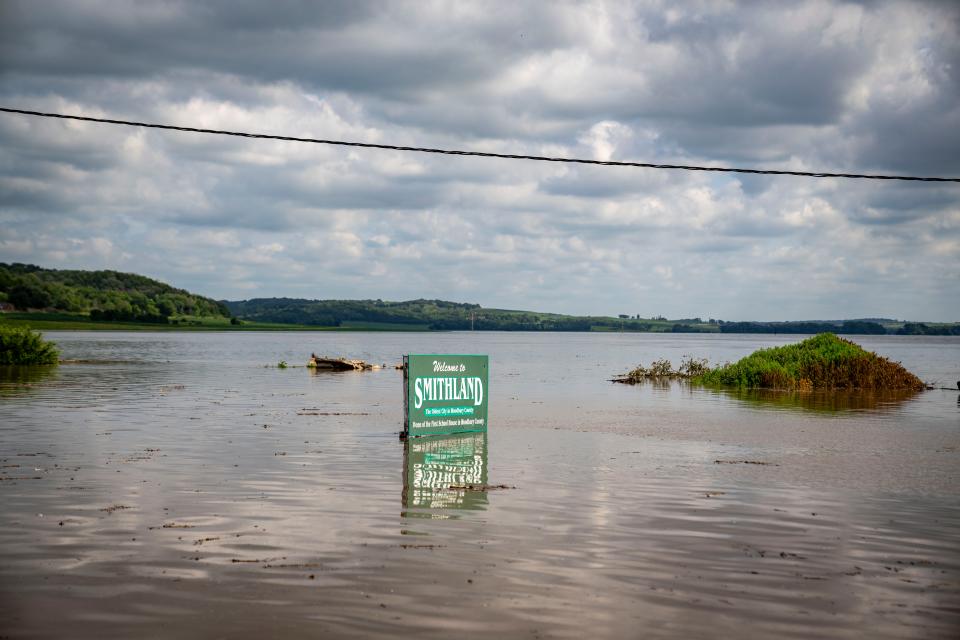
About 4 miles south of Smithland, near the town of Rodney, the Nagel District maintains a vulnerable levee segment. Like nearly half of the other levees inspected in Iowa, according to the U.S. Army Corps of Engineers, the segment is "operationally deficient."
The dirt ridge stands on the east bank of the Little Sioux and juts out of the Johnston Pit, a hole filled with gravel and water and catfish. Soil on the back end of the levee rolled into the pit 12 years ago, leaving the levee too thin. A strong rush of water would blow through what still stood, the Corps concluded.
Shull and other Nagel District trustees had tried to fix the problems since 2012, spending $700,000 on engineering studies, soil tests and failed repairs. The levee remained too weak.
More: As state faces expensive levee fixes, could a $10 billion plan decrease flooding in Iowa?
On the afternoon of June 25, Shull received a call from another Nagel District trustee, who had ridden a 4-wheeler by the Johnston Pit and would deliver unwelcome but unsurprising news. Water pounded the levee, blowing a hole as wide as a football field. The river poured onto farmland.
“It was only just a matter of time,” Shull said.
Iowa needs 'hundreds of millions' of dollars to fix levees
The levee breakage at the Johnston Pit underscores a major problem for Iowa, one yet again on the minds of state leaders after last month’s historic flooding that killed at least two people and displaced hundreds of Iowans from their homes.
An operationally deficient rating, earned by 48% of inspected levees in Iowa, means a levee would likely fail during a flood because of structure problems.
Meanwhile, researchers say climate change is creating more intense rainfall and flooding. But such a bad score is also a financial problem for Iowa. Under federal law, the Corps will not pay to repair operationally deficient levees.
Legally, districts like the Nagel are responsible for improving the levees to Corps standards. But the authors of the 2022 Iowa Homeland Security and Emergency Management report, which cited the Corps' data, wrote that most small districts will never raise enough money to fix the problems.
Instead, the department has suggested, the Legislature should allocate money to fill the gap. The authors concluded that bringing all Iowa levees to Corps standards will cost “hundreds of millions of dollars.”
The Legislature responded to the report last year, allocating $5 million a year in gambling revenues to a Levee Improvement Fund. The Office of Levee Safety, a division of Homeland Security, also has funded yet another study. Department officials believe this study will be more thorough. They expect to finish it in the summer of 2028.
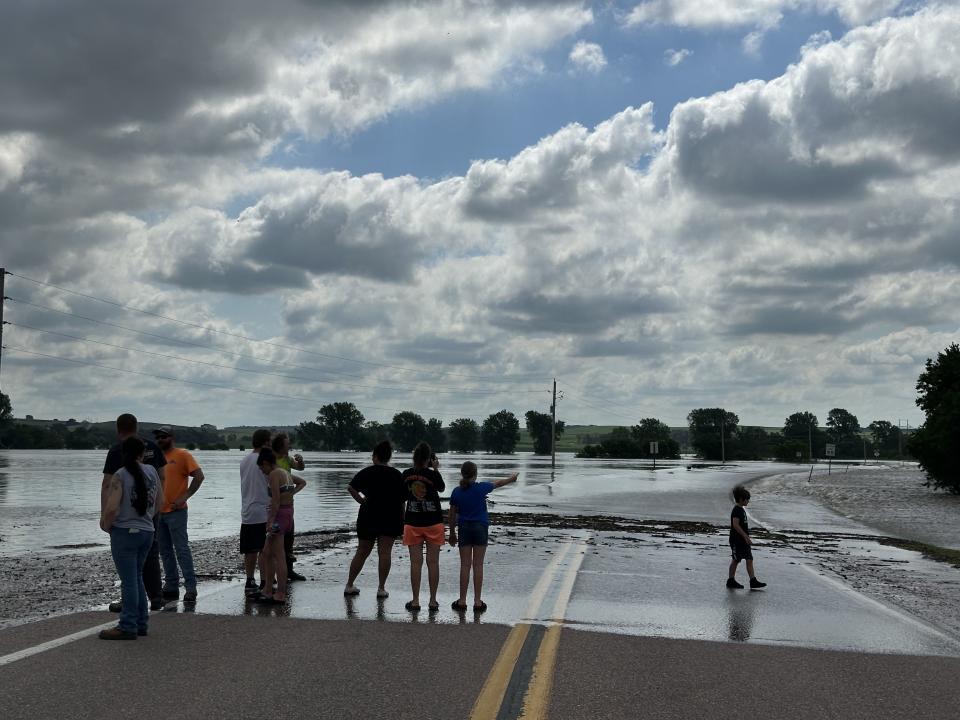
During a June 27 tour of the flooded town of Spencer, Gov. Kim Reynolds declined to say whether the Legislature should allocate more money to flood infrastructure. She pointed out that Iowa has spent hundreds of millions of dollars on mitigation since a Cedar River flood wrecked Cedar Rapids in 2008.
“That’s constantly been a priority,” she said. “But like we do after every disaster, we assess and we see what we need to do.”
In a way, levee district leaders said, Iowa got lucky last month.
The floods came from rain that hit northwest Iowa and southeast South Dakota. Upstream states like Montana and North Dakota did not absorb similar storms. As a result, the Corps did not face pressure to release large gushes of water from its reservoirs and dams, a move that would have swelled the Missouri River.
In 2019, 47 levees broke between Council Bluffs and the southern Iowa state line. Last month, just one levee broke: the one at Johnston Pit on the Little Sioux.
Levee district leaders told the Register they are unprepared should a more intense flood arrive.
Leon Freeman, a former Homeland Security disaster specialist who consults levee districts, does not believe the Legislature will allocate enough money to fix the problem. He awaits the next tragedy.
“I see nothing but trouble for them,” he said of the levees. “And, as much as I hate to say it, decay over time. Which is going to cause more flooding, which is what we’re seeing and seeing and seeing.”
Local official: 'We should let our levees fail' to get state funding
In Harrison County, near DeSoto National Wildlife Refuge, Mason Hansen looked out onto his own fields after the floods passed.
Water swallowed stalks of corn, choking them, turning them gray. He wondered when the crop would keel over.
He watched the same decay in 2019, when the Missouri River filled his fields. And in 2011, when water ran through his land, east to DeSoto National Wildlife Refuge, forcing staff to evacuate the visitors’ center.
“There’s plenty of misery to go around,” said Hansen, 49.
His property is near a rare stretch of the Missouri River unprotected by any levee. He wants a barrier. He doesn’t expect the state to pay for one.
Larry Buss, trustee of the Rand Peterson Levee District, which ends a couple of miles north of Hansen’s property, has tried to extend his system. He applied for about $5 million in state funding in 2019, trying to protect Hansen’s property and replace some sand embankments with clay.
Buss said the state turned him down. He applied again this summer, now at a cost of $10 million due to increased construction costs.
Like Hansen, Buss is not optimistic. He blames his own success. A hydraulic engineer at the Corps for 41 years, Buss said he knows how to make his inadequate levees work.
During the disasters of 2011, 2019 and 2024, Buss said he led local “flood fight” teams. They bulldozed soil and sand into temporary levees, adding extra protection along the Missouri.
Twice a day, the team drove atop the levees, looking for signs that the embankments might crack. The team in particular looks for “boils,” spots on the dry side of a levee where Missouri River water seeps through, “bubbling” with sediment. Buss and his neighbors plug the holes with bentonite, a clay that expands when wet.
In 2019, Buss said the flood fighters plugged three boils. They plugged another one last month, saving the property behind the levees.
Both times, Buss said, water would have blown through the levees if not for their plugs.
“I’m sure some of (the levee districts) have not done anything" to protect the levees, he said. “Nothing. Zero.”
The Rand Peterson district won’t reach Corps standards with local funding, Buss said. He and the other trustees decline to tax neighboring farmers, arguing that charging them for the infrastructure is not fair. The state and the Corps have paid to fix levees after previous floods.
Buss said he lobbied the Legislature after the 2011 floods, asking state lawmakers to fund half of a Corps study of a stretch of levees along the Missouri River. The federal government would have paid for the other half. But Buss said both Democratic and Republican leaders at the Capitol turned down his request. He believes lawmakers have not taken flood prevention seriously enough — at least when the problem comes down to dollars.
“It’s crossed my mind that we should let our levees fail once,” Buss said. “Then we would have some priority. Because we do our job and make it work, we don’t have any priority. We don’t get any money.”
He added that he would never follow through on such an idea.
“This is just a thought in the old guy’s mind,” said Buss, 78. “We don’t work that way.”
Iowa has passed several levee funding bills, though local districts want more
To be sure, Iowa has funded flood mitigation more than many states, according to an Associated Press analysis.
In 2011, as part of an infrastructure bonds package under Democratic Gov. Chet Culver, the state allocated $165 million to flood protection and recovery projects.
A year later, under Republican Gov. Terry Branstad, the state created the Flood Mitigation Program. The bill allowed cities to capture sales tax over a certain annual threshold, routing money destined for state coffers to local flood-protection projects instead.
The program netted about $600 million for 10 cities, including about $111 million for Des Moines.
But that system benefited only Iowa’s biggest cities. Rob Hogg, a former Democratic state senator from Cedar Rapids, said he filed bills to fund small-town flood projects. The Legislature voted down his bills.
Following the 2019 floods, Reynolds said state leaders needed to do more to protect residents from future disasters.
“We’re going to look at it differently this time,” she said then. “We can’t continue to have a levee system that isn’t adequate.”
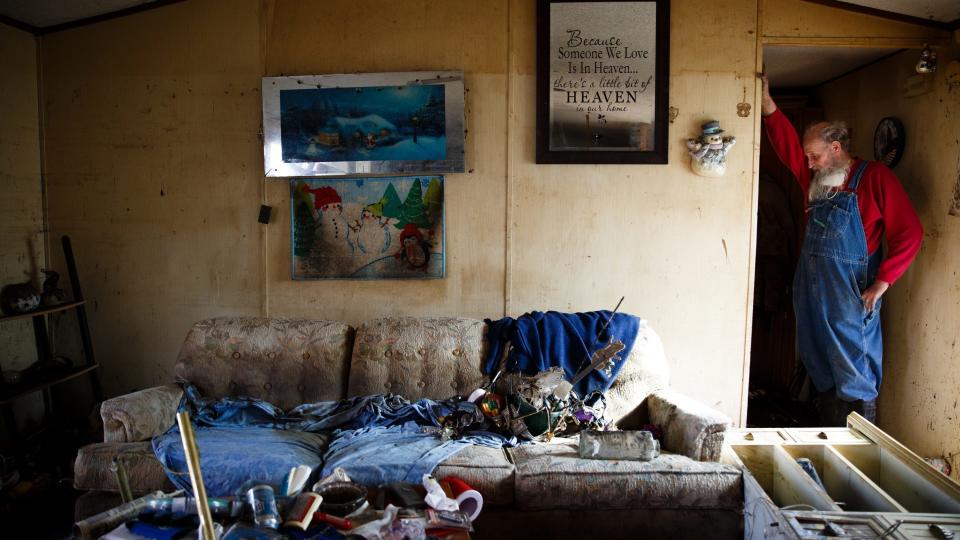
The Legislature allocated $36 million to fund flood infrastructure, sending money to ravaged southwest Iowa communities such as Hamburg and Pacific Junction. But Hogg told Iowa Capital Dispatch in 2020 that the state had received about $160 million in requests for flood mitigation — four times as much as the state provided.
Since then, state leaders have taken small steps to improve the levees.
The state funded the Iowa Homeland Security and Emergency Management levee study that came out in 2022. That report found several problems with the state’s levees. With declining rural populations, the report’s authors wrote, small levee districts can’t raise enough money to meet Corps standards.
The authors said the Corps’ standards have continued to increase, making maintenance even more expensive. The Corps now requires districts to replace metal pipes with concrete, for example.
While the study found 48% of inspected levee segments were operationally deficient, the Corps has inspected only half of the state’s levees, the authors noted. That leaves officials unclear about the conditions of the others.
“The current approach of managing and financing levee districts within the state of Iowa is unsustainable,” the authors wrote.
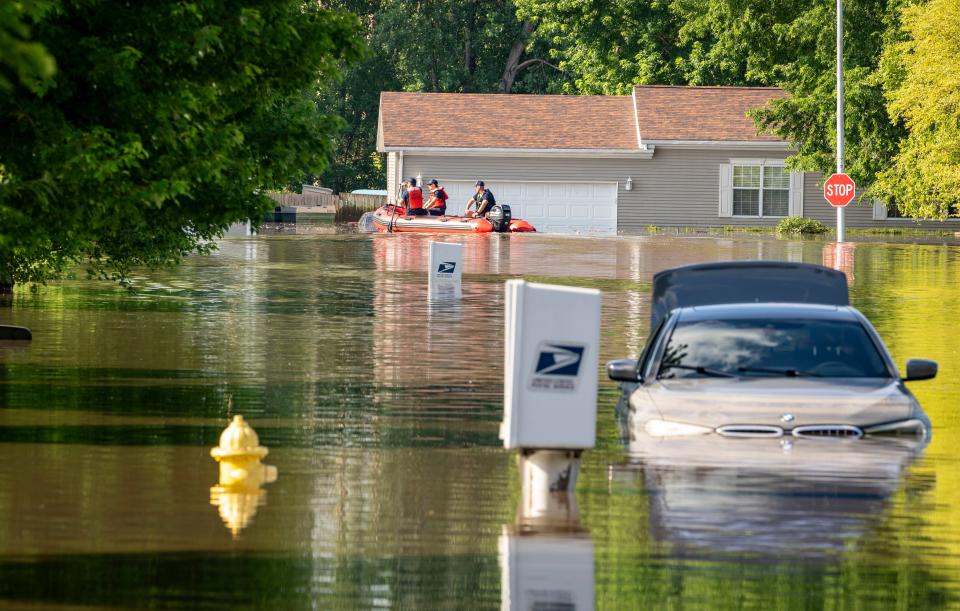
Iowa won't finish levee study until 2028
State Geologist Keith Schilling, whose office is conducting the new study on Iowa levees, said his team will inspect every system in the state. The team will drive at the tops and the bottoms of the embankments with an electro-magnetic rod. The rod sends electric pulses 20 feet into the ground, detecting electric activity.
Different material registers different levels of electricity. The readings tells geologists if the levees are made of sand, dirt or clay.
Sand is porous and prone to slipping away when attacked by a rush of water. Sand is bad. Clay, on the other hand, is strong. Engineers — and nearby residents — want levees made of clay.
The electric magnetic rods also can detect holes inside the levee, which make them likely to break under pressure.
When the geologists finish surveying levees, Schilling said engineers will take over. The engineers will examine each levee, writing reports detailing the problems with each structure. Eventually, a state board of department heads and lawmakers will decide which projects to fund.
The Office of Levee Safety expects Schilling’s team to survey every Iowa levee by 2028. He said he could finish by 2026 if the state boosted his budget. He added that the state allocates about $1 million to his office, compared to an average of $4 million among his counterparts in other Midwestern states.
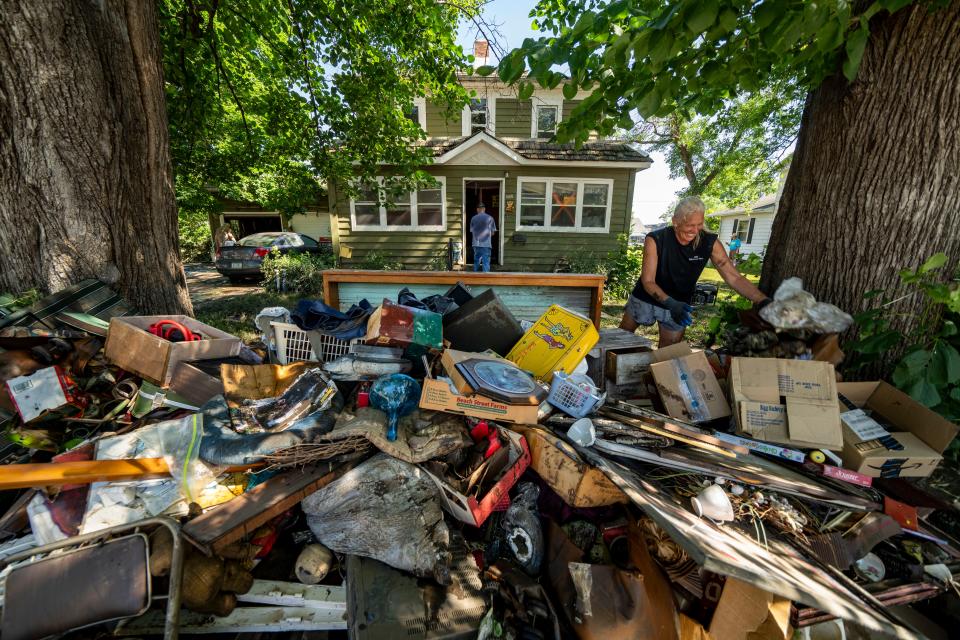
Rep. Sami Scheetz, D-Cedar Rapids, said the geology office is “woefully underfunded.” He added that the state needs to allocate more money to levee improvement, pointing out that the Legislature voted in 2023 to allocate $6 million to maintenance of the state-owned Honey Creek Resort.
“Fully funding our levee system — or at least adequately funding it — should be a higher priority than funding resorts,” Scheetz said.
Sen. Tom Shipley and Rep. David Sieck both said the federal government should fund the bulk of the improvements.
“It’s going to take money to get all of this done,” said Shipley, R-Corning. “And we’re going to help do what we can. But we’ve got to have federal partners on much of this.”
Shipley and Sieck also called for levee districts to merge. They said Corps paperwork is too complicated for small districts, many of them run by unpaid board members without full-time employees. The lawmakers said bigger boards that cover more parts of the levee could apply for federal help with one application — as opposed to several applications across the same area.
Sieck, R-Glenwood, said Corps representatives have been impressed with Iowa’s effort to understand its levee problems after the 2019 floods. He said the Corps will likely fund many state projects.
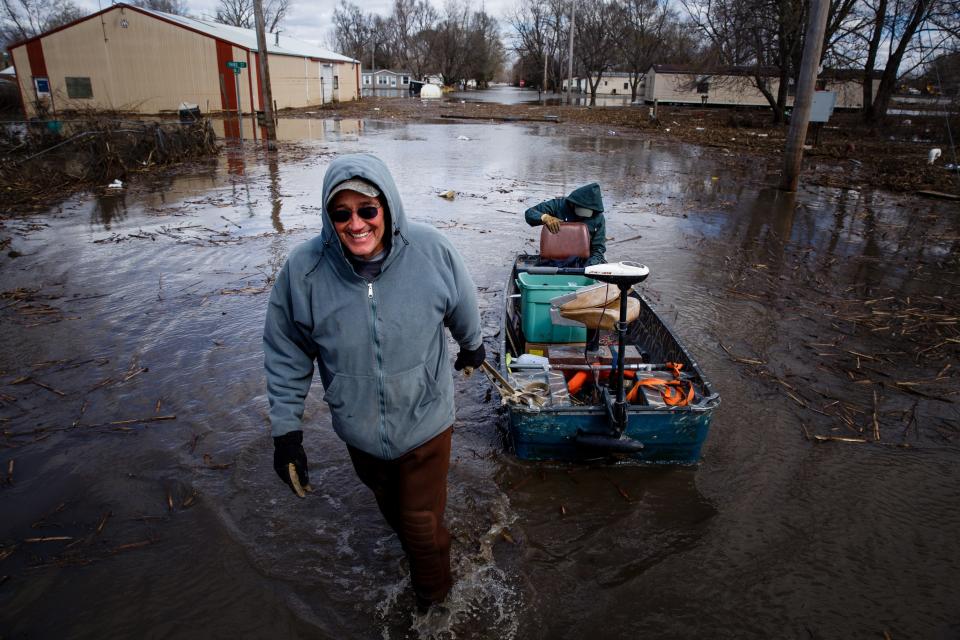
State, local officials say meeting Corps standards is too hard
Sieck also criticized the Corps for increasing levee standards too strictly over the years. After Hurricane Katrina sparked federal investigations and lawsuits against the Corps, he said, its officials created demands that local districts couldn’t meet.
“They’re trying to push the blame back to the local entities,” Sieck said. “That way they don’t have as much risk. They’re making everything tougher.”
However, Buss, the former Corps engineer and Rand Peterson district chair, derided critiques of levee standards.
“When people say, ‘It’s too costly,’ that’s how we get into the problems of levee failures,” he said. “They don’t invest the money to keep the levees sound.”
In Monona County, Shull said money is not his levee district's problem. He said the Corps is too difficult to work with.
He said an engineer proposed a solution to the part of the district's levee that backs up to the pit, the part of the embankment that broke last month.
The levee’s current location, on the edge of the pit, forces builders to construct the back side of the embankment at a steep incline, which makes the levee unstable. The soil eroded into the pit 12 years ago. Shull said the soil would erode again if the district didn't move the structure.
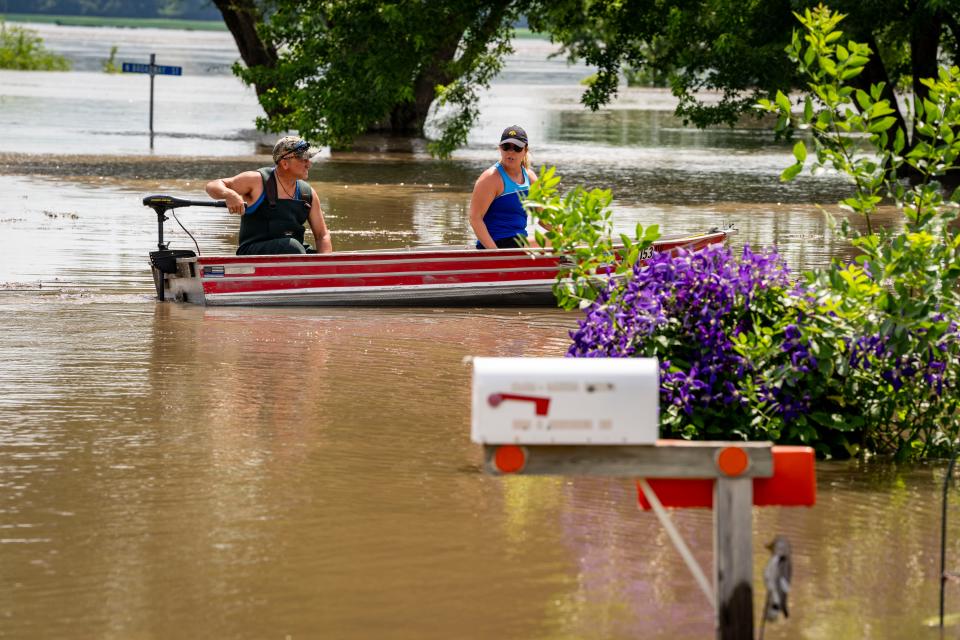
Shull said the district wants to move the levee away from the pit, closer to the Little Sioux. But a levee closer to the water would narrow the Little Sioux. The river would rise.
The district’s engineers modeled the effect of moving the levee, concluding that water would rise ½ of an inch. Shull believes the model satisfied the Corps’ concerns. But he said the Corps has not approved the plan. After years of negotiating, he said the district’s engineer doesn’t know what else the Corps wants.
Before last month’s flood, the engineer estimated that the Corps would not approve the plan until 2025. Shull estimates the timeline to move the levee will be 2026.
“We’ve got the money to fix it and are willing to fix it,” he said. “We just can’t get the Corps to fix it. It’s like, ‘Whose fault is this?’”
Register reporter Kyle Werner contributed to this story.
Tyler Jett is an investigative reporter for the Des Moines Register. Reach him at tjett@registermedia.com, 515-284-8215, or on X at @LetsJett. He also accepts encrypted messages at tjett@proton.me.
This article originally appeared on Des Moines Register: Half of Iowa's levees are 'deficient'. Fixing them will cost millions.

